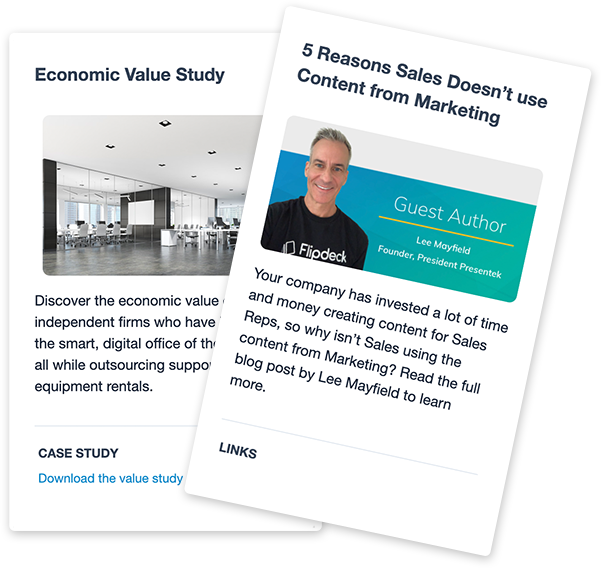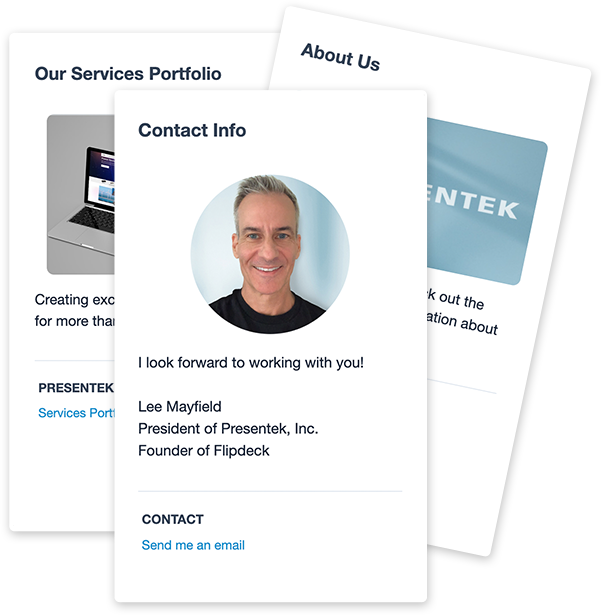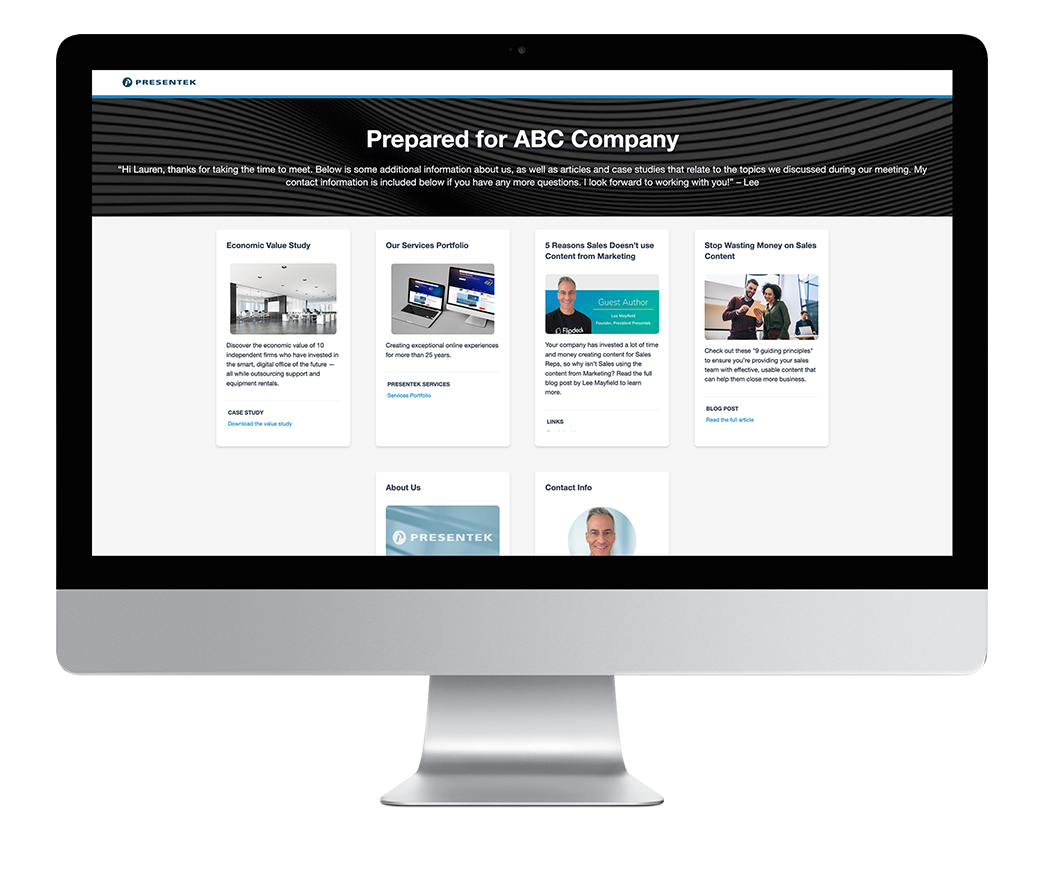How to Follow Up After a Client Meeting

Follow up like a pro! Use these tips and tricks to check in after the first meeting with a prospective client.
Way to go! You just finished a meeting with a potential brand-new customer. This is such a positive achievement. So, now what?
Think of it this way — you have an advantage coming out of this meeting. You have so much more information now than when you went in, including more details on why the prospective client agreed to meet with you. Ideally, there was some productive communication, and you were able to lay the groundwork for the future.
Now, it’s time to craft your follow-up. Following up after the first meeting is a great opportunity to differentiate your company in your prospect's eyes. Use this opportunity to demonstrate professionalism not only with what information you deliver, but when you deliver, and how you deliver.
If you’re not sure where to start, use this framework as a guide to ensure an effective follow-up email:
- Give them exactly what they asked for
- Prove you listened and understand the issues
- Demonstrate you can solve their issues
- Show your uniqueness
Want tips on what to send BEFORE the first meeting? Read our article on “How to Prepare for Your Next Client Meeting” and come back when you’re done!
What information should I send after the first meeting?

Give them exactly what they asked for
If your prospect asked for certain things, of course, make sure to provide those materials.
Prove you listened and understand the issues
If they didn't request specifics, you can show you paid attention to their needs by curating specific information based on what was discussed. Be careful not to throw your entire content library at them.
Demonstrate you can solve their issues
Share solution-focused content, something non-salesy, that presents know-how. Showing your expertise can help to build confidence with new customers. If you have proof points, such as case studies, that align somehow to your prospect’s challenges, industry, company size, etc., this is better than something generic.

Show your uniqueness
Just by doing the above, you're distinguishing yourself from other suppliers, but are there specific things you heard from your prospect that you can use to show your uniqueness? For example, if they're concerned about compliance, can you direct them to resources your company has produced? If they mention sustainability, can you include something from your company expert on the topic?
What about product info?
If they asked for it and you can reasonably give it with what you know, then yes. It may be too early to put forth a specific solution or configuration. This is where a product overview, a line card, or a capabilities summary can provide the right amount of product info, but not too much too soon.
Include a clear call-to-action
Be clear about the next step, whatever that next step may be for you and your company. Provide clear instructions and any necessary contact information for future reference.
Add a personalized message
It seems so simple, but one of the best things you can do to stand out is write a personal message to the new client. Tailor the information and personalize the presentation to each prospect, but also, address them by their name. Treat them like a person and not just a sale.
Use something like this as an example:
"Hi Lauren, thanks for taking the time to meet. Below is some additional information about us, as well as articles and case studies that relate to the topics we discussed during our meeting. My contact information is included below if you have any more questions. I look forward to working with you!" – Lee
How should I send information after the first meeting?
If you read our recent blog post, “What info should I send before the first meeting with a prospect?” you’ll remember that there are various methods of providing information content to your prospect. This includes sharing files using cloud storage, directing prospects to your website, or the most common method of sending information — email attachments. They all have their pros and cons, and you should find a method that works for you and your company.

An alternative — package your information in a Flipdeck
When you send a Flipdeck, the presentation of your information is visual and professional. Package all your content together and share it in a way that is convenient for your audience to consume. Our digital format is interactive and easy to share, so your prospects can connect with colleagues and easily distribute your information as more people come into the project.
Perhaps the most important part — the way you share information matters— and sharing with Flipdeck means you'll stand out from everyone else.
Pro tip: When you create a Flipdeck, you get a custom link, so you can send your content in any way that you would share a URL. Curate a Flipdeck to send over a few pieces of information before the first meeting, and then add to it afterwards as a follow-up. You can continue to add to it as things progress. This way, your prospect can use the same link and go to the same place instead of searching through countless emails to find the correct attachment.
SEE AN EXAMPLE LEARN MORE ABOUT FLIPDECK
Create an
account and try Flipdeck FREE, no credit card required.
Looking for more details? See examples or visit our support resources page.
Learn more about Flipdeck Accounts & Pricing Options.
Have questions? We're happy to help! Check out our Frequently Asked Questions or email us
at \u0069\u006e\u0066\u006f\u0040\u0066\u006c\u0069\u0070\u0064\u0065\u0063\u006b\u002e\u0063\u006f\u006d.